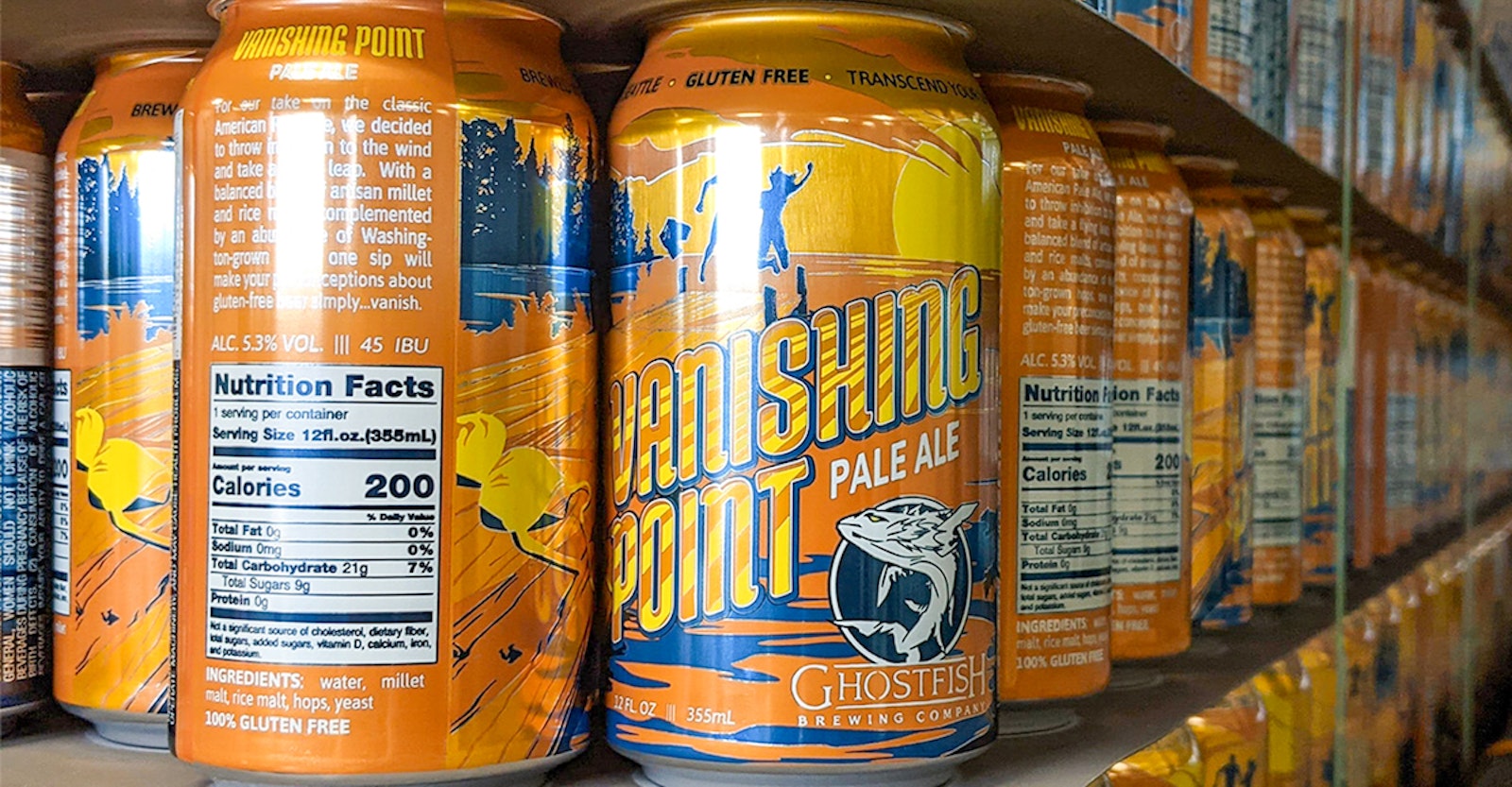Discussed and expected for years, the U.S. Alcohol and Tobacco Tax and Trade Bureau is initiating the process that could end with rules requiring breweries to include nutritional info on all their cans and bottles. While it may take a few years for changes to go into effect, what’s happening now is an opportunity to let the agency know how any new requirements might affect your brewery.
The TTB held two virtual listening sessions on February 28 and 29, and groups from the beer, wine, and spirits industries joined a few nonprofits and consumer advocates to submit their public comments. Those representing brewers included the Brewers Association, the Beer Institute, and the North Dakota Brewers Guild. However, the agency is continuing to accept public comments until March 29—though it could opt to extend that period.
Essentially, the TTB is considering whether to require the same nutritional information on alcoholic drinks that the Food and Drug Administration requires on other foods and beverages—calories, carbs, fat, protein, and so on. So far, 60 individuals and businesses have submitted their views, including several small wineries and breweries. Broadly, they argue that any new requirements would be too much of a burden on their businesses.
Besides listing allergen info, this “‘nice to know’ information would have a seriously negative impact on manufacturers, especially your micro/nano operations, aka small businesses,” says a comment from Brothers Kershner Brewing in Skippack Village, Pennsylvania.
The comment from Brothers Kershner argues that the costs of having lab tests done on each beer would be too high, that the labs would be inundated, that it would lead to delays in TTB label approvals and bringing products to market, and that it would be a “significant strain” on the revenue streams at small breweries. “Trust me when I say we do not need any help making less money! … A seemingly simple adjustment [for] the general public for sure could be detrimental to industry members.”
“The cost to adequately and precisely provide the data and samples to be tested would add tens if not hundreds of thousands of dollars to the cost of production,” says a comment from Ellicottville Brewing in Ellicottville, New York. The brewery says it produces 14,000 to 16,000 barrels per year, which would be enough to place it among the top 5 or 6 percent of craft breweries nationwide by production. “The average craft brewer could not absorb these costs,” the comment says, “costs we simply cannot pass along to customers, as the market is already so very competitive. If the goal is to reduce the number of brewers currently operating—then yes, this bill will greatly do that.”
For its part, the Brewers Association—whose members are predominantly small, independent breweries—says that it supports transparency in labeling “while also seeking to ensure that new obligations do not stifle innovation or unfairly burden small businesses,” says Marc Sorini, the BA’s general counsel.
In his public comments on behalf of the BA, Sorini urges the TTB not to impose any requirements that would negatively impact small-batch producers. However, the BA is expressing some support for nutritional-labeling requirements—with caveats. For example, existing TTB policies include a standard for “statement of average analysis” for beers that claim to be low in calories or carbohydrates. “We accordingly support requiring disclosure—either on- or off-label—of a beer’s calories, carbohydrate, fat, and protein content,” Sorini says in a recent post on the BA website.
However, any ingredient listings must consider that ingredients that go into the brewing process are not necessarily there, or there in the same form, after fermentation and any processing. “Materials consumed during production or added as processing aids should be excluded if not found in the finished beer,” Sorini says.
Sorini also argues that any labeling requirements should apply only to beers that move from one state to another. “As brewers already know, this authority (which, among other things, determines when a brewer must obtain a Certificate of Label Approval or ‘COLA’ for a label) requires that the beer cross state lines in order to be considered within ‘interstate commerce,’” he says. “We accordingly do not expect any new TTB labeling rule to apply to the thousands of taproom-only, brewpub-only, or in-state distribution-only beers produced and sold by our members.”
The BA also has joined its voice with several in the wine industry in arguing that some information could be provided via QR codes, rather than requiring small breweries with limited printing capabilities to include a block of nutritional data on their bottles and cans. “The European Union recently took this approach with its new wine-labeling regulations, providing TTB with an excellent example to follow,” Sorini says.
However, some consumer advocates argue that QR codes wouldn’t be enough, as they would be impenetrable to those who lack smartphones or tech savvy.
“Making the information available only through a QR code or web address would impose unreasonable burdens on consumers, particularly those who are low-income, rural, and older,” says Eva Greenthal of the Center for Science in the Public Interest, a watchdog group that argues for more transparency in health labeling, according to wine industry website WineBusiness. “Accessing QR codes requires a smartphone, which not all consumers have, and Internet access, which not all stores and drinking venues provide. This is not how nutrition ingredient and allergen labeling works for nonalcoholic beverages, and foods and alcoholic beverages should not be an exception.”
Any brewers, winemakers, distillers, drinkers, or anyone else from the general public has until March 29 to submit their public comments at Regulations.gov.

